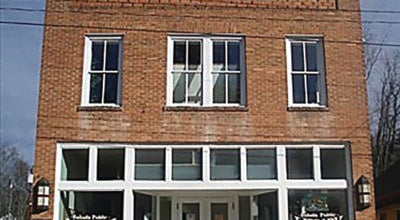What “using existing routes” really means
Published 9:43 pm Thursday, September 3, 2015
To the editor:
A lot has been said of the Duke Modernization Project lately and the Bulletin has invested a lot of ink and newsprint to the subject. I keep seeing a recurrent theme though, and it’s one that apparently needs some clarification on scale, impact and perspective.
Many folks have said Duke should use existing routes. If we look at the “Proposed Study Area” there are only two and suggesting them could be a strategy by folks along Hwy. 11 and Hwy. 25 in South Carolina along what is the proposed Route 4 and those along proposed routes 19, 2B and 2C in Horse Country to divert the transmission lines away from themselves. One can only speculate, and saying this is in no way meant to cast a “not in my back yard” accusation.
The only “existing routes” in the “Proposed Study Area” are the 100KV line that runs from the existing Campobello substation, across Gowensville, behind Lake Lanier, over Melrose Mountain and through Saluda. The right of way for this transmission line is approximately 60 feet wide and the towers around 80 feet tall or less. The other line is a 44KV line and also has a width of about 60 feet with similar sized towers. This line runs through Tryon from Campobello and goes over Howard Gap, just north of Saluda and through East Flat Rock.
If either of these routes were selected, the right of way required would be in excess of 220 feet. This is not that much narrower than the length of a football field and a Boeing 747 is 211 feet wide just to give some perspective. It will also be defoliated on occasion and will be a brown slash across the landscape. Pollution from the defoliants will be inevitable.
The towers for both sets of transmission lines would be on either side of the 220 foot right of way. The towers for the 230KV line would dwarf the 100KV or 44KV lines by anywhere from 60 to 112 feet (Duke has given an average of 140 feet but has clarified to say they vary, with maximum height being 192 feet). Six conductor cables and maybe two guy wire cables will be strung along towers spaced 1,000 feet apart. Mountainous regions may be required to have large red balls suspended on them as a visual warning to aircraft. I’m not sure if towers on top of mountains would be required to have beacons.
A few weeks ago, Ray Gasperson reported the existing swath he could see from the view spot on top of Melrose Mountain and was alarmed by it. What he saw is nothing compared to the monstrosity that will dissect the Foothills, run over Melrose Mountain and over Saluda. If completed, he or anyone else will see a landing field sized scar (sometimes brown from defoliation), monstrous towers and a steel structure occupying 16 acres at the intersection of I-26 and the Cherokee Foothills Scenic Highway.
When folks exit I-26 at Exit 5 coming west, they are treated to an amazing vista of the Foothills, the Escarpment and Thermal Belt areas. After more than 20 years of taking this exit I still get a smile on my face when coming to the top of the exit ramp because of the beauty. This will change drastically, with a 16-acre labyrinth of steel, security fencing, girders, insulators and transformers positioned in the foreground of the vista to the west.
Do we really deserve this? Is this the legacy we leave future generations? What will they say of us when they look out over the defacement we allowed to happen to this most amazing of landscapes and places?
This transmission line and substation are not necessary and if they are, Duke should put them on an existing route capable of little modification and on already defaced landscape. A right of way runs from Pisgah Forest through the DuPont Forest, down over Jones Gap and to a location west of Marietta, S.C. It is very wide because it carries two existing transmission lines, one 230KV and the other 100KV. There, it intersects with the Oconee-McGuire 525KV line (the same line Duke would connect with in Campobello). Duke, build the substation at this intersection, stack one of the existing lines (100KV) on the new 230KV lines and minimize the destruction.
If you stick to your guns on the location of the substation, one can only speculate on the actual purpose of paying twice the market rate for the almost 200 acres you bought and what you plan to do with the remaining land. Could you be courting a large multi-national corporation to build at the site and completely ruin our Foothills and our way of life? We really deserve to know, because the impact is forever and will be our new normal.
Terry Schager
Campobello, S.C.





